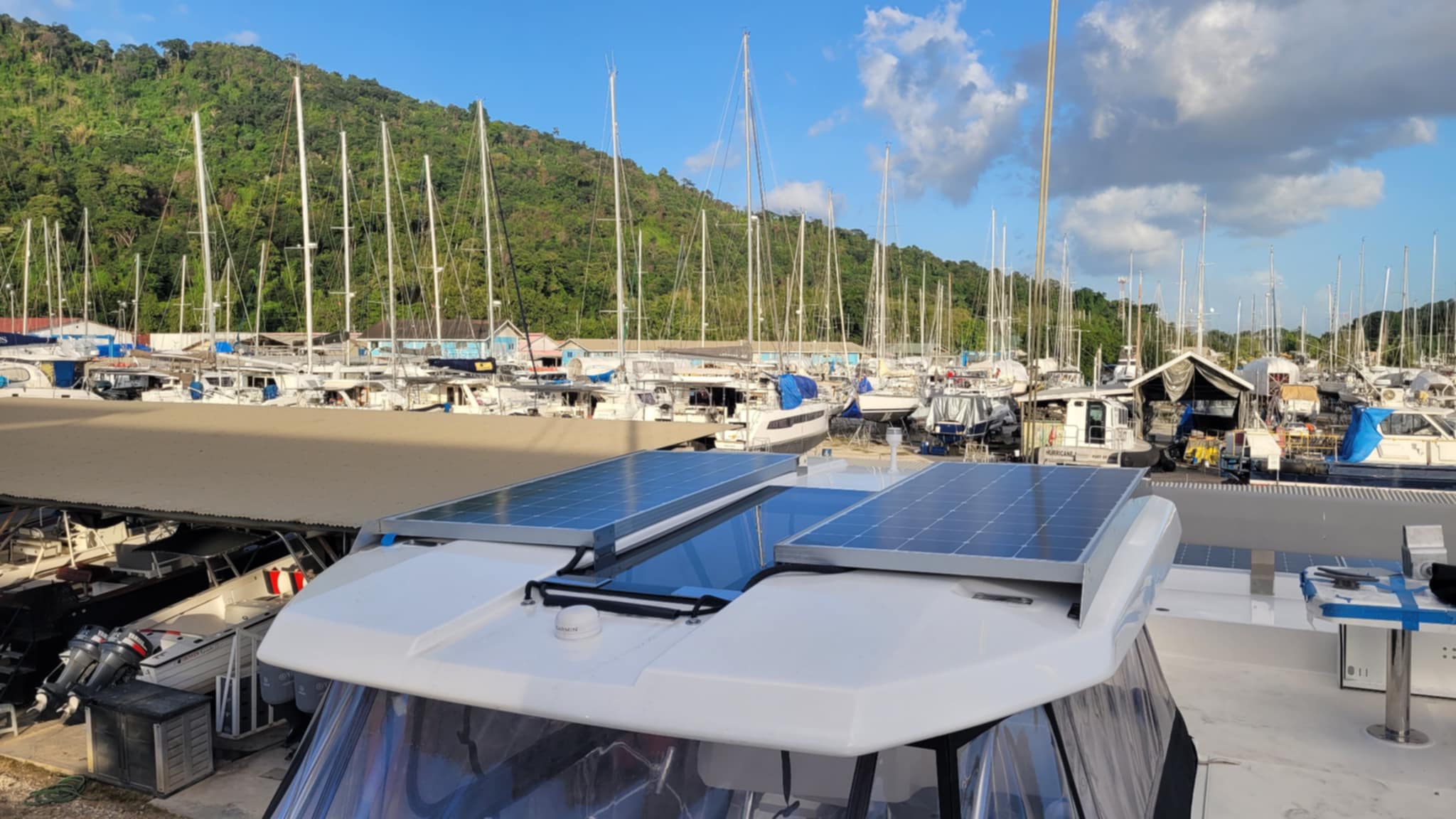Whether your yacht has been ashore for winter, hurricane season, or a long refit, the final weeks before launch are some of the most important and often chaotic. It’s the time to catch problems while they’re still easy to fix, as a thorough inspection and systems check now can help prevent costly mid-season failures, leaks, or breakdowns, once you’re back at anchor.
While every boat has it’s quirks, here are some of the common things to look out for before the next sailing adventure begins.
The hull and below the waterline
Starting with the hull; anything missed here can quickly turn into a major problem once afloat. A careful walk around inspection to recheck the hull gives you another chance to spot signs of damage, corrosion, or osmosis, that you didn’t when the boat first came out. As we all know, it’s much easier to fix hull issues on the hardstand, and it also provides the perfect opportunity to do some preventative maintenance.
Here are some things to check:
- Hull and keel for cracks, blisters, delamination, or rust streaks around the fittings or keel bolts
- Rudder and rudder bearings for play or resistance
- Propeller for fouling, corrosion, movement or bent blades, and check if it has adequate grease or needs a protective coating applied (like Propspeed)
- Saildrives or shaft for signs of damage or deterioration
- Thru-hulls and seacocks for damage, function and lubrication
- State of the anodes, replacing if necessary
The days prior to launch are generally a good time to apply new coats of antifoul to the hull as well. There are many different types out there, and as discussed in other noforeignland articles, which antifoul you choose will depend on various factors, such as your cruising grounds, budget and thoughts on it from an environmental perspective.
Topsides and deck
Spending months out of the water can leave the boat’s topside dirty and chalky, with seized fittings and brittle sealant. A well-prepared deck means fewer leaks, less corrosion, and safer footing. While some of these things can be dealt with out on the water, it can be easier in a yard where you have access to mains water, shore power and convenient garbage disposal.
You may want to:
- Wash and inspect gelcoat for cracks, chips, or signs of UV damage, then polish or wax surfaces to protect against degradation
- For wooden hulls or brightwork, sand back and apply new varnish where coatings have thinned or lifted
- Inspect deck hardware, including cleats, stanchions, pulpits, and chainplates, for corrosion and loose bolts
- Examine non-slip surfaces and anti-slip tape, replacing if worn smooth
- Clean the drains and scuppers to ensure proper runoff
- Check hatches, portlights, and seals for leaks, re-bedding or replacing seals if any moisture has made its way inside
If there’s time before your launch slot it’s also nice to give the boat a final wash down, leaving the grime and dust of the boatyard behind.
Rigging and sails
Rig checks are a crucial part of boat maintenance, as stainless steel fittings and wires can corrode unseen. Even a well-covered mast can suffer from hidden wear, and a snapped shroud offshore is not something to discover the hard way.
Before launching or immediately after, it’s good to:
- Inspect standing rigging for cracked swages, rust stains, or broken strands
- Examine turnbuckles, chainplates, and mast step for corrosion or stress marks
- Check the running rigging (halyards, sheets, reefing lines) for chafe, damage or stiffness
- Lubricate the winches, pulleys, and tracks with the appropriate grease
- Hoist sails and inspect for tears, worn stitching, mildew, or UV damage.
- Check the furling systems operate smoothly
For more information about the importance of rigging checks and what to look for, have a read of Don’t Forget the Rig!
- This broken strand was noticed during a DIY rigging check
Mechanical and electrical systems
The engine and electrics are your lifelines once you’re back underway. Long periods without use can lead to corrosion, clogged filters, or seized components, so give everything a thorough once over.
Here are some general things to do:
- Check the engine oil and coolant levels
- Inspect belts and hoses for cracking or stiffness
- Ensure fuel filters are clean and there’s no sign of diesel bug in the tank
- Check exhaust lines for leaks or blockages
- Recharge or replace batteries, clean terminals, and apply dielectric grease
- Confirm the alternator and charging systems are working correctly
- Test all navigation lights, bilge pumps, autopilot, and instruments
- Check the tender engine and battery
If you have a components like a generator, water maker, or windlass, it’s also a good idea to test them in a controlled environment before your first trip.
Plumbing and onboard systems
Depending on how much time you spent off the vessel, your water, gas, and sanitation systems may have sat dormant. Leaks, smells, or blockages can appear once pressure is restored to these systems, so finding them before you launch can make life much easier.
While going over the boat you could:
- Drain, clean, flush and refill freshwater tanks
- Test pumps and filters for smooth operation, and replace any filters that are due (or overdue!)
- Check the seacocks and hoses in heads and the galley
- Inspect the gas system for leaks
- Ensure the hot water heater and plumbing lines aren’t leaking
Safety equipment
Safety gear often gets overlooked until it’s needed, but before you relaunch it’s a good time to bring everything up to standard and replace expired or corroded items.
This can include:
- Inspect life jackets for fabric wear and inflate manually to check the bladder integrity
- Confirm the liferaft service dates and that the hydrostatic release is in date
- Check pressure gauges and expiry labels on all fire extinguishers
- Verify the batteries and expiry dates of equipment like EPIRBs, PLBs, and flares
- Manually test the bilge pumps and float switches
- Perform a VHF radio check (not on Channel 16)
- Inspect guard wires, jackstays, and harness points for corrosion or frayed stitching
It’s also worth reviewing the requirements of your insurance company and country of registration, to ensure everything is compliant.
From the shipyard to the sea
Launch day is a big one; nerve wracking and exciting. While it’s rare to feel 100% ready, knowing that you’ve gone over your boat helps give confidence that everything is prepared for the next adventure.
What do you recommend people do to prepare for their launch? By sharing ideas we can build a pool of knowledge for the community, helping other cruisers learn from our own experiences.

Telicia lives aboard a 2021 Leopard 45 with her two best friends and an Australian Shepherd. Together they’re sailing the world, and sharing their experiences through their Travel Sketch channel on YouTube. Their cruising grounds have so far included the Mediterranean and Caribbean, with the Pacific Islands and South East Asia coming next. Telicia is also editor of the NFL Magazine.








What a brilliantly written article. Not only informative, but well laid out and entertaining! Thank you!